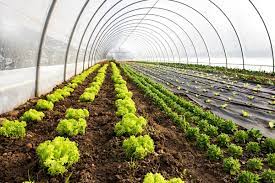Healthy and successful food production is reliant on a plant efficiently controlling various variables. In this sense, maintaining the right temperature is not just a recommendation but a necessity. Food plants must juggle the hot and cold aspects of internal climate control with precision.
This requirement may manifest as a form of required recipes, or even as a form of germ control! Here’s a deeper dive into climate control in food plants, and how architects recognize this need:
The Need for Precision Climate Control
Food processing, just like cooking, involves many different ingredients coming together. However, unlike home cooking, the entire process takes place at scale! As such, temperature must be controlled precisely for each ingredient coming together. From fermentation to freezing, the internal climate must foster product quality and safety. Precision in this regard not only ensures optimal conditions for microbial control and product preservation but also contributes to the overall efficiency of the production process!
The Challenge of Excess Heat
While maintaining specific temperatures is crucial, food plants also face the challenge of managing excess heat or cold generated during various processes. Machinery itself is known to generate high temperatures. Cooking or sterilization processes also result in significant spillover heat. The solution can be found in architecture. Fluctuations in temperature must be accounted for by strategic vent placement and redistribution. Controlling excess heat also makes on-ground staff much happier and more productive!
Crafting Efficient Climate Control Systems
Temperature is a tricky challenge, but architects have evolved their methods to match it! This begins from the design stage, where a layout is strategically planned to optimize air circulation and temperature distribution. If equipment is expected to produce a lot of heat, architects can focus on climate control interventions in that area. Similarly, an area that requires a cool climate can be designed to be far away from high-heat areas! Additionally, architects incorporate insulation measures to retain or release heat as needed, ensuring a stable internal climate.
Stendel + Reich food plant architects not only understand how important climate control is but also focus on understanding your unique business needs. Any industrial building’s success is measured by the value it adds to the business. A highly efficient system can thus lead to genuine difference! Climate control is only the beginning of the various design efficiencies that an expert food plant architect can bring in.




